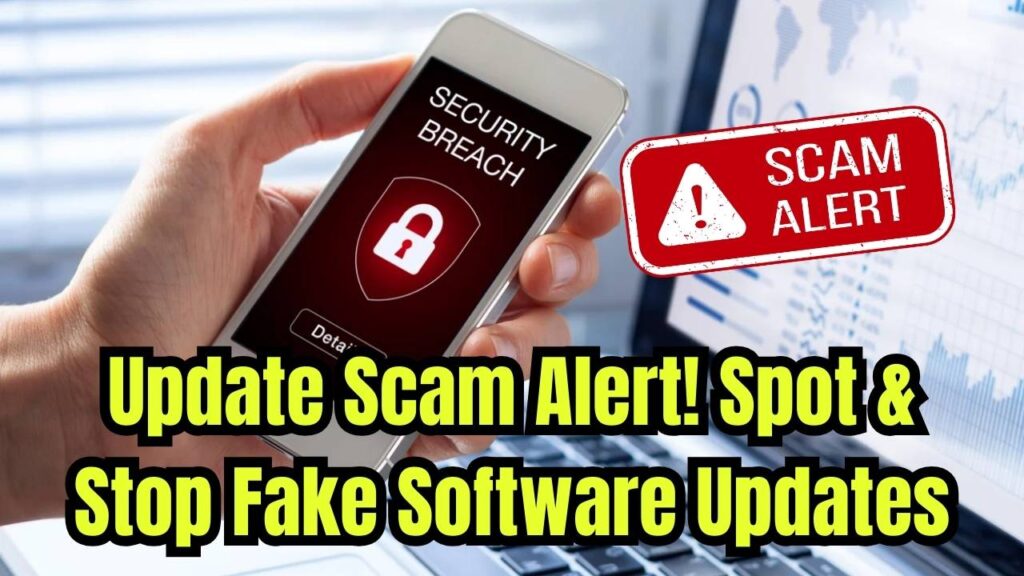
Online Software Update Fraud: Every day, millions of people see pop-ups or emails claiming that their software needs an update. While some of these messages are legitimate, many are not. Online software update fraud is a growing cybercrime tactic where scammers trick people into downloading fake updates that can install malware, steal personal data, or even hijack entire systems. This article will help you understand how to recognize and avoid these traps.
Whether you’re a tech-savvy professional or just trying to keep your home computer safe, learning to identify fraudulent update scams is crucial for your digital safety.
Online Software Update Fraud
| Topic | Details |
|---|---|
| What is it? | Online fraud tricking users into installing fake software updates |
| Common Targets | Personal computers, business networks, mobile devices |
| Tactics Used | Pop-ups, phishing emails, fake websites |
| Risks Involved | Malware, ransomware, data theft, system control |
| Signs of a Scam | Spelling errors, unusual URLs, pushy messages |
| Verified Sources | FTC, CISA, Microsoft |
| Prevention Tips | Use official sites, enable auto-updates, run security software |
| Who Should Care | Individuals, IT professionals, business owners |
| Latest Reported Losses | Over $350 million in 2024 due to fake software update scams (FBI IC3 Report) |
What is Online Software Update Fraud?
Online software update fraud happens when cybercriminals disguise malicious software as legitimate updates for programs like browsers, operating systems, or antivirus tools. The goal is to trick you into downloading malware or spyware, which can then:
- Steal sensitive data (like passwords or bank details)
- Lock you out of your system using ransomware
- Track your activities
- Turn your device into part of a botnet
These scams are clever, often using logos and messaging that mimic trusted companies such as Microsoft, Google, or Apple.
How These Scams Work: Real-World Examples
Let’s break down how these scams typically unfold:
1. Fake Browser Update
You visit a website and suddenly see a pop-up: “Your browser is out of date. Click here to update.” This page looks nearly identical to Google Chrome’s official site but redirects to a malicious file.
2. Email Phishing Scam
You get an email that appears to be from Adobe, saying there’s a critical update for your PDF reader. It includes a link, but instead of going to Adobe.com, it takes you to a compromised site.
3. Mobile App Update Fraud
A fraudulent app prompts users to update outside of Google Play or the App Store. These updates often contain spyware or adware.
According to a 2024 report by the FBI Internet Crime Complaint Center (IC3), software fraud led to losses exceeding $350 million in the U.S. alone.
4. Fake Tech Support Calls
Scammers may call pretending to be from “Microsoft Support,” claiming your computer is outdated and offering to help with an “update.” This often results in remote access control and complete data compromise.
How to Spot a Fake Software Update
Learning how to spot a fake update can protect you from serious cyber threats. Here are some telltale signs:
Unusual URLs or Web Domains
Check if the website URL is legitimate. Fake sites often use typos like “micros0ft.com” or “gooogle-update.net.”
Poor Grammar or Misspellings
Official update messages are typically well-written. If the text looks off, be suspicious.
Pushy Language
Messages that say “Update Now!” or “Your device is at risk!” are trying to rush you into a mistake.
Unsolicited Prompts
If you weren’t expecting an update, verify it manually from the official website or app settings.
File Type Red Flags
Most legitimate updates use formats like .exe (Windows), .dmg (Mac), or .apk (Android). Be cautious of files like .scr, .bat, or .js.
How to Avoid Online Software Update Scams
Step-by-Step Prevention Guide
1. Enable Automatic Updates
Most trusted software offers automatic updates. Enable this feature so you don’t need to manually check for updates.
2. Use Only Official Websites
Always download updates from the official vendor’s website. Bookmark these pages:
- Google Chrome
- Microsoft Windows
- Apple Software
3. Install Antivirus and Anti-Malware Tools
Use reputable tools like Norton, Bitdefender, or Malwarebytes. Make sure they’re set to auto-scan and update regularly.
4. Avoid Public Wi-Fi for Updates
If you’re updating software, do it on a secure, private network. Public Wi-Fi is often unsecured and targeted by hackers.
5. Educate Your Team or Family
If you’re in charge of IT at work or the tech-savvy person in your household, teach others about these risks.
6. Check the Digital Signature
Right-click the downloaded file > Properties > Digital Signatures tab. Make sure the publisher is the official source.
7. Report Scams Promptly
If you encounter a fake update, report it to organizations like FTC or IC3.
Frequently Asked Questions (FAQs)
1. What should I do if I already clicked on a fake update?
Disconnect from the internet immediately. Run a full malware scan using a reputable tool. Change your passwords, especially for sensitive accounts.
2. Can Macs and iPhones get fake update scams too?
Yes. While Apple has strong security, no system is immune. Always verify updates in Settings or the App Store.
3. Are browser pop-ups ever legit?
Rarely. It’s safer to go into your browser settings and check for updates manually.
4. Is it safe to click “Update” in an app?
Yes, if the app is downloaded from a trusted source like Google Play or the App Store. Avoid third-party prompts.
5. What are digital signatures and why do they matter?
A digital signature verifies the authenticity of a file. It’s a way for software developers to prove their update hasn’t been tampered with. Only trust files with valid digital signatures.







